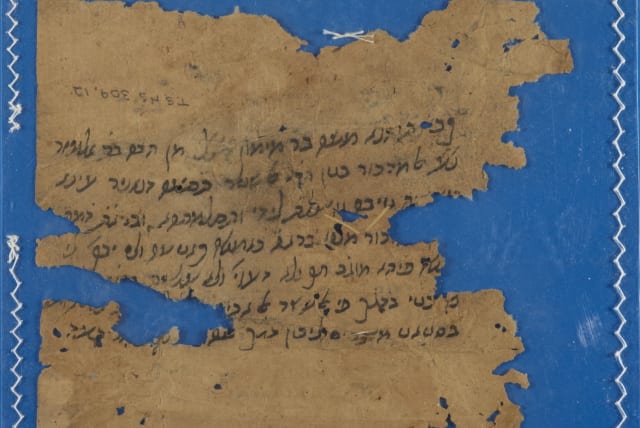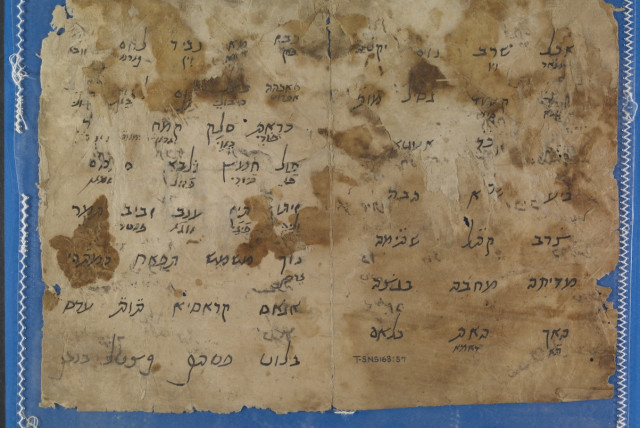New artifacts join Yeshiva University Museum's Maimonides exhibit

One of the new documents in the exhibit is a receipt written by Maimonides for funds raised to free ransomed Jewish captives taken after the Crusader assault on Bilbeis, Egypt.
Yeshiva University Museum (YUM) announced additions to its Maimonides exhibit, including several historic fragments of centuries-old documents on loan from Cambridge University Library, according to a press release. The new additions to the exhibit "The Golden Path: Maimonides Across Eight Centuries" will be on display through February 29, 2024.
One of the documents is a receipt written by Maimonides for funds raised to free ransomed Jewish captives taken after the Crusader assault on Bilbeis in northeast Egypt - which YUM said may hold an elevated level of meaning considering the current hostage situation and ongoing efforts to navigate their release amidst the war against Hamas.
Maimonides’ had been heavily involved in freeing captives seized during the Crusades. The document is said to be a practical demonstration of the Jewish commandment to retrieve hostages and save lives.
The commandment was especially important for Maimonides, who once famously proclaimed, "There is no greater mitzvah (commandment) than the redemption of captives."
Other artifacts featured in the exhibit include a Mishneh Torah (code of law that revolutionized the study and practice of Judaism) signed and personally approved by Maimonides; a fragment from the Cairo Genizah with Maimonides’s signature and other fragments handwritten by the scholar; and a volume of his commentary on the Mishnah, containing notes written by Maimonides and a well-known sketch of the Temple Menorah. The drawing may have been drawn by the sage and has in recent decades become the model for menorahs used in public Hanukkah celebrations across the world.
Who is Maimonides?
Maimonides was an outstanding character: He was a halacha consultant to the degree that he wrote the Mishneh Torah, a renowned doctor who served in the sultan's court and a sharp philosopher who affected not only Jewish thinkers from Shpinoz to Leibowitz but also the greats of Christian philosophers.
Jerusalem Post Store
`; document.getElementById("linkPremium").innerHTML = cont; var divWithLink = document.getElementById("premium-link"); if (divWithLink !== null && divWithLink !== 'undefined') { divWithLink.style.border = "solid 1px #cb0f3e"; divWithLink.style.textAlign = "center"; divWithLink.style.marginBottom = "15px"; divWithLink.style.marginTop = "15px"; divWithLink.style.width = "100%"; divWithLink.style.backgroundColor = "#122952"; divWithLink.style.color = "#ffffff"; divWithLink.style.lineHeight = "1.5"; } } (function (v, i) { });

